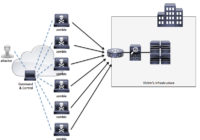Warning: terminal_substitute(): Argument #1 ($match) must be passed by reference, value given in
/home/cpanxiop/public_html/hyderabadwebhosting.in/blog/wp-content/plugins/post-terminal/post-terminal.php on line
113
Fatal error: Uncaught TypeError: count(): Argument #1 ($value) must be of type Countable|array, null given in /home/cpanxiop/public_html/hyderabadwebhosting.in/blog/wp-content/plugins/post-terminal/post-terminal.php:59
Stack trace:
#0 [internal function]: terminal_substitute()
#1 /home/cpanxiop/public_html/hyderabadwebhosting.in/blog/wp-content/plugins/post-terminal/post-terminal.php(113): preg_replace_callback()
#2 /home/cpanxiop/public_html/hyderabadwebhosting.in/blog/wp-includes/class-wp-hook.php(324): terminal_before_filter()
#3 /home/cpanxiop/public_html/hyderabadwebhosting.in/blog/wp-includes/plugin.php(205): WP_Hook->apply_filters()
#4 /home/cpanxiop/public_html/hyderabadwebhosting.in/blog/wp-includes/formatting.php(3965): apply_filters()
#5 /home/cpanxiop/public_html/hyderabadwebhosting.in/blog/wp-includes/class-wp-hook.php(324): wp_trim_excerpt()
#6 /home/cpanxiop/public_html/hyderabadwebhosting.in/blog/wp-includes/plugin.php(205): WP_Hook->apply_filters()
#7 /home/cpanxiop/public_html/hyderabadwebhosting.in/blog/wp-includes/post-template.php(436): apply_filters()
#8 /home/cpanxiop/public_html/hyderabadwebhosting.in/blog/wp-includes/post-template.php(401): get_the_excerpt()
#9 /home/cpanxiop/public_html/hyderabadwebhosting.in/blog/wp-content/themes/iconic-one/inc/extra-functions.php(19): the_excerpt()
#10 /home/cpanxiop/public_html/hyderabadwebhosting.in/blog/wp-content/themes/iconic-one/content.php(47): iconic_one_excerpts()
#11 /home/cpanxiop/public_html/hyderabadwebhosting.in/blog/wp-includes/template.php(812): require('/home/cpanxiop/...')
#12 /home/cpanxiop/public_html/hyderabadwebhosting.in/blog/wp-includes/template.php(745): load_template()
#13 /home/cpanxiop/public_html/hyderabadwebhosting.in/blog/wp-includes/general-template.php(206): locate_template()
#14 /home/cpanxiop/public_html/hyderabadwebhosting.in/blog/wp-content/themes/iconic-one/index.php(25): get_template_part()
#15 /home/cpanxiop/public_html/hyderabadwebhosting.in/blog/wp-includes/template-loader.php(106): include('/home/cpanxiop/...')
#16 /home/cpanxiop/public_html/hyderabadwebhosting.in/blog/wp-blog-header.php(19): require_once('/home/cpanxiop/...')
#17 /home/cpanxiop/public_html/hyderabadwebhosting.in/blog/index.php(17): require('/home/cpanxiop/...')
#18 {main}
thrown in
/home/cpanxiop/public_html/hyderabadwebhosting.in/blog/wp-content/plugins/post-terminal/post-terminal.php on line
59




